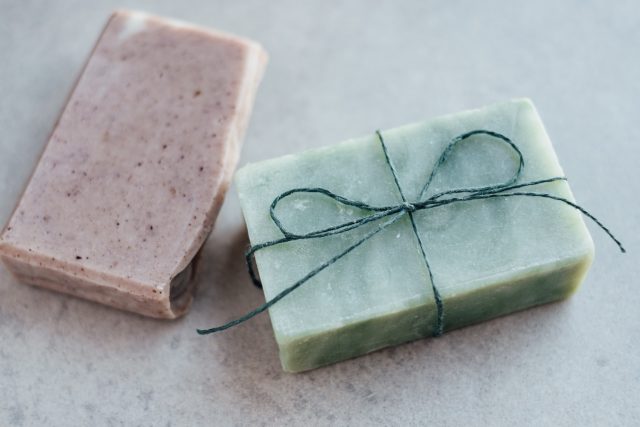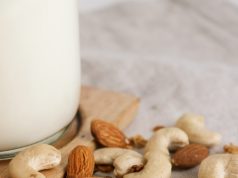As the world shifts towards more sustainable practices, many people seek ways to reduce their environmental footprint. One simple and fulfilling activity is making your own soap at home. It is an enjoyable and creative process, but making your own soap also helps support sustainability by reducing waste and using natural ingredients. In this article, we will cover the basics of soap making, explore the benefits of creating your own soap, and discuss some tips to ensure you make a successful batch every time.
Soap Making
Soap making is a fun and rewarding hobby that has been enjoyed for centuries. Making soap allows you to create a product that is tailored to your individual preferences, including scent, texture, and ingredients. Soap-making involves combining oils, lye, and water to create a chemical reaction that results in soap. There are many different methods of soap making, including cold process, hot process, and melt and pour. Each method has its own unique benefits and challenges. One of the joys of soap making is experimenting with different ingredients, such as essential oils, natural colorants, and exfoliants. Whether you’re a beginner or an experienced soap maker, there is always something new to learn and discover in the world of soap making.
Materials Needed
Soap making requires a few basic materials, including oils, lye, water, and equipment for mixing and measuring. The specific materials needed will depend on the method of soap making you choose. For cold-process soap making, you’ll need a selection of oils and butter, such as coconut oil, olive oil, and shea butter, as well as lye and water.
You’ll also need a scale for measuring ingredients, a stainless steel or heat-resistant plastic mixing bowl, a stick blender for mixing the ingredients, and soap molds for shaping and setting the soap. You’ll need similar ingredients for hot process soap making, but the process involves cooking the soap mixture in a crockpot or double boiler. Melt and pour soap making involves melting pre-made soap bases and adding desired ingredients. The equipment needed is minimal, including a heat-safe container and microwave or stovetop. It’s important to use high-quality materials and equipment for soap making to ensure your soap is safe and effective.
Step-by-Step Instructions
Soap-making can initially seem intimidating, but following a step-by-step process can help simplify the task. Here are some general instructions for cold-process soap making:
- Gather all necessary equipment and ingredients.
- Weigh out the desired amount of oils and butter, and melt them together in a heat-safe container.
- In a separate container, measure out the lye and carefully add it to water, stirring until dissolved. Wear protective gear, such as gloves and goggles, when handling lye.
- Allow the oil and lye mixture to cool to a similar temperature of around 110-120°F.
- Slowly pour the lye mixture into the oils while using a stick blender to mix thoroughly. Blend the mixture until it reaches a trace when it thickens and begins to leave a visible trail when the blender is lifted.
- Add any desired colorants, fragrances, or exfoliants, and stir well.
- Pour the soap mixture into soap molds, tapping the molds gently to remove any air bubbles.
- Cover the molds with a towel or other insulating material to help the soap set and go through the saponification process.
- Allow the soap to cure for at least 4-6 weeks before using or giving it as a gift.
- Keep in mind that these are general instructions, and the specific process may vary depending on the method of soap making you choose. Always follow safety precautions when working with lye, and make sure to measure and record your ingredients for the best results accurately.
Benefits of DIY Soap
There are several benefits to making your own soap. Firstly, you have control over the ingredients that go into your soap. Many commercially produced soaps contain synthetic fragrances, harsh chemicals, and preservatives that can irritate or dry out the skin. By making your own soap, you can use natural ingredients that are gentle on the skin and tailored to your individual preferences.
Secondly, making your own soap can be a cost-effective option in the long run. Once you’ve invested in the necessary equipment and materials, you can create batches of soap at a lower cost per bar than buying individual bars from a store. Plus, you can reuse or recycle packaging, which reduces waste and is better for the environment.
Finally, soap-making can be a fun and creative hobby. There are endless possibilities for scent, color, and texture, allowing you to experiment and create unique soaps that reflect your personal style. Handmade soap can make a thoughtful and personalized gift for friends and family.
Overall, DIY soap making is a satisfying and rewarding hobby with numerous benefits, from better skin health to cost savings and environmental friendliness.
Sustainability & Eco-Friendly Practices
In addition to your skin and wallet benefits, DIY soap-making can also be a sustainable and eco-friendly practice. By making your own soap, you can reduce waste by reusing or recycling packaging materials and avoiding plastic packaging associated with store-bought soap.
Furthermore, you can choose to use environmentally friendly ingredients, such as sustainably sourced oils and butter, natural colorants, and biodegradable exfoliants. Many commercial soaps contain palm oil, which is linked to deforestation and habitat destruction. By choosing to use sustainably sourced palm oil or alternative oils, you can help reduce the negative impact of palm oil production on the environment.
You can also opt to use organic and local ingredients, which reduces the carbon footprint associated with transportation and supports local farmers and businesses. Additionally, you can make smaller batches of soap to reduce waste and minimize the impact of the production process.
In summary, DIY soap making is a sustainable and eco-friendly practice that can benefit both your skin and the environment. Choosing natural and sustainably sourced ingredients and practicing responsible packaging can reduce waste and contribute to a healthier planet.
Tips & Troubleshooting
Soap-making can be a fun and rewarding hobby, but it can also be challenging. Here are some tips and troubleshooting techniques to help ensure success:
- Accurately measure your ingredients: It’s important to weigh them precisely to achieve the desired results. Use a digital kitchen scale for accurate measurements.
- Be patient: Soap-making requires patience and attention to detail. Take your time and follow each step carefully.
- Keep safety in mind: Always wear protective gear when handling lye, and make sure to work in a well-ventilated area.
- Avoid overheating: Keep an eye on the temperature of your soap mixture to avoid overheating, which can cause your soap to crack or separate.
- Check for trace: Mix your soap mixture until it reaches trace, which is when the mixture thickens and leaves a visible trail. Mix thoroughly to avoid any separation or unevenness in your soap.
- Use a thermometer: Keeping an eye on the temperature of your oils and lye solution can help you avoid overheating or underheating, which can affect the texture and quality of your soap.
- Troubleshoot texture issues: If your soap turns out too soft or hard, you may need to adjust your recipe or process. Too much or too little lye can also affect the texture of your soap.
- Address fragrance issues: If your soap smells unpleasant, it may be due to rancid oils or fragrances that don’t mix well with your soap recipe. Try experimenting with different oils or fragrances to find the right combination for your soap.
Remember that soap-making is a learning process; it may take some trial and error to achieve your desired results. You can create beautiful and luxurious handmade soap with practice and attention to detail.
Conclusion: Enjoy Your Soap!
In conclusion, making your own soap can be a fulfilling and rewarding experience. With the right ingredients, tools, and techniques, you can create a soap that is gentle on your skin, cost-effective, and environmentally friendly. By using natural and sustainably sourced ingredients and minimizing waste, you can contribute to a healthier planet while also taking care of your well-being.
While there may be some challenges along the way, don’t be discouraged! Soap-making is a craft that takes practice, patience, and attention to detail. You will learn something new with each batch you make and improve your skills.
Ultimately, the most important thing is enjoying and having fun with the process. Whether making soap for personal use or as a gift for others, the satisfaction of creating something with your hands is truly rewarding. So gather your materials, get creative, and enjoy your handmade soap!






























